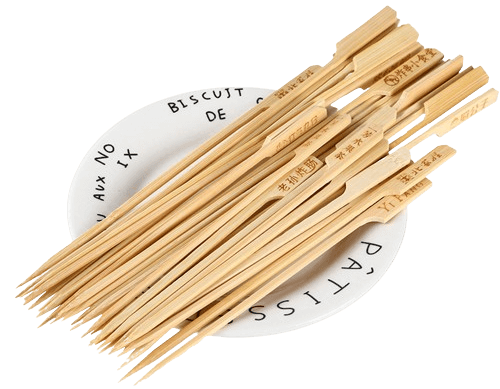Key Takeaways
| Key Points | Details |
|---|---|
| Historical Significance | Chopsticks have evolved over millennia, showcasing their deep roots in Asian culture. |
| Choosing Chopsticks | Bamboo chopsticks are recommended for beginners due to their grip and environmental benefits. |
| Basic Techniques | Learning the correct grip and positioning is crucial for effective use. |
| Cultural Etiquette | Understanding do’s and don’ts can enhance dining experiences and show respect for the culture. |
Introduction
Chopsticks aren’t just tools for eating; they are emblems of cultural heritage and culinary dexterity. At Ecostix Global, we pride ourselves on crafting bamboo chopsticks that are not only sustainable but also a bridge to embracing these rich traditions. This guide is designed to simplify the chopstick-learning curve and enrich your dining experience with both skill and cultural wisdom.
The History and Cultural Significance of Chopsticks
Chopsticks have been integral to Asian dining etiquette for over 5,000 years, evolving from simple cooking tools to sophisticated dining implements. Originating in ancient China, they have spread across various Asian cultures, each adding its unique touch to how chopsticks are used and perceived. In Japan, for instance, chopsticks are shorter and often ornate, while Korean chopsticks are typically made from metal and have a flat shape.
Chopsticks are not merely utensils but symbols; they reflect a philosophy of balance and moderation, evident in the way they are used to pick up rather than stab food. This method encourages mindfulness and a slower, more appreciative approach to meals, aligning with the principles of harmony and respect deeply rooted in Asian cultures.
Choosing the Right Chopsticks
For beginners, selecting the right chopsticks is crucial. Bamboo chopsticks, like those offered by Ecostix Global, are particularly beginner-friendly due to their lightweight and grippy texture, which makes handling easier. They are also environmentally friendly, aligning with our mission to support sustainable living practices. To explore our range of bamboo chopsticks, visit our products page.
Bamboo’s natural properties make it an ideal choice for chopsticks. It’s not only sustainable but also naturally antimicrobial, making it safer and more durable than plastic alternatives. For those interested in the sustainability aspect of bamboo chopsticks, more information can be found on our bamboo chopsticks sustainability page.
Basic Techniques: How to Hold and Use Chopsticks Correctly
Mastering chopsticks begins with learning the proper way to hold them. Here’s a straightforward method to get you started:
- Position the First Chopstick: Rest the first chopstick so it lies at the base of your thumb and extends to the bottom of your little finger. It should remain stationary and supported by your ring finger.
- Grip the Second Chopstick: Hold the second chopstick like a pencil, with the tip of your thumb, index, and middle fingers. This chopstick moves when you pick up food.
- Practice the Pinch: Practice opening and closing the tips of the chopsticks. Ensure they meet at the tips for a successful pinch.
Visual aids to demonstrate this technique can greatly enhance understanding and are an effective way to show the positioning and movement involved. For detailed visual instructions, check out our guide on mastering the art of precision cooking with bamboo cooking chopsticks.
Practical Tips for Mastering Chopsticks
With the basic grip down, these tips will help refine your technique and make using chopsticks feel more natural:
- Start with Larger Pieces: Begin by picking up large pieces before attempting smaller grains like rice.
- Practice Regularly: Like any skill, regular practice is crucial. Use chopsticks to eat more often to build your dexterity.
- Use the Right Tools: Not all chopsticks are created equal. Lightweight bamboo chopsticks can be easier to handle than heavier wooden or metal ones.
Chopsticks Etiquette: Do’s and Don’ts
Proper chopstick etiquette is as important as the technique. Here are some essential do’s and don’ts:
- Do Not Stick Chopsticks Upright in Rice: This resembles incense burning at a funeral and is considered disrespectful.
- Do Not Pass Food Chopstick-to-Chopstick: This mimics a ritual involving the bones of the deceased and is seen as a bad omen.
- Do Use Chopstick Rests: When not using your chopsticks, place them on a chopstick rest or on the table, parallel to you, to avoid pointing them at others.
Understanding and adhering to these cultural nuances is not only a sign of respect but also enhances the dining experience. For more detailed etiquette tips, visit our etiquette of chopsticks and forks page.
Fun Facts and Additional Uses of Chopsticks
Beyond their primary use, chopsticks hold a place in various aspects of life:
- Art and Decoration: Skilled artisans often paint or carve intricate designs on chopsticks, turning them into collectible art pieces.
- Cooking Tools: Chopsticks are invaluable in cooking, perfect for flipping, stirring, and reaching into jars.
Chopsticks are not just dining utensils but a gateway to a deeper understanding of the culture and arts of Asia. Their versatility and cultural significance make them a fascinating topic of exploration.
Conclusion
Embracing the art of using chopsticks is not just about learning a new way to eat; it’s about connecting with a rich cultural heritage and enhancing your culinary experiences. With practice, the right tools, and an understanding of etiquette, anyone can master this skill.
For more insights into the sustainable and cultural impact of choosing bamboo chopsticks, visit our dedicated page on best reusable chopsticks for environmental and cultural impact.
We hope this guide inspires you to practice and enjoy the art of using chopsticks, enhancing your dining experiences, and deepening your appreciation for an age-old tradition. For further reading or to purchase your own set of bamboo chopsticks, please visit our contact page for more information.




One Response
What’s up, yes this paragraph iss reaslly fastidiouis and I have learned
lot of things from iit on the topic of blogging.
thanks. https://Ukrain-forum.biz.ua/